Yongfu You
Cloud-Magnetic Resonance Imaging System: In the Era of 6G and Artificial Intelligence
Oct 18, 2023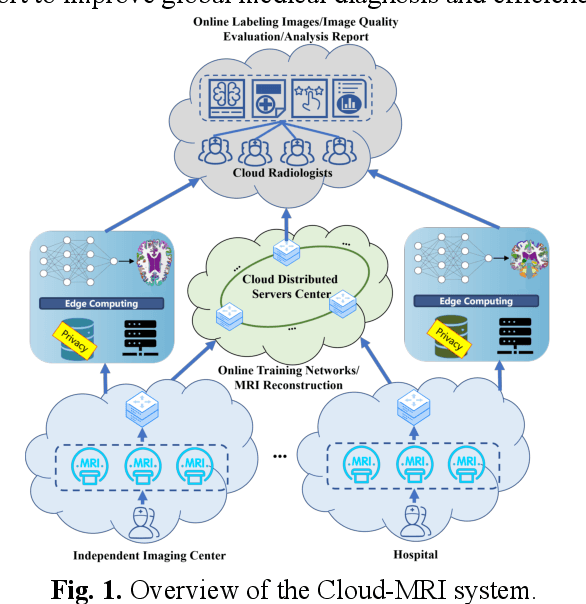
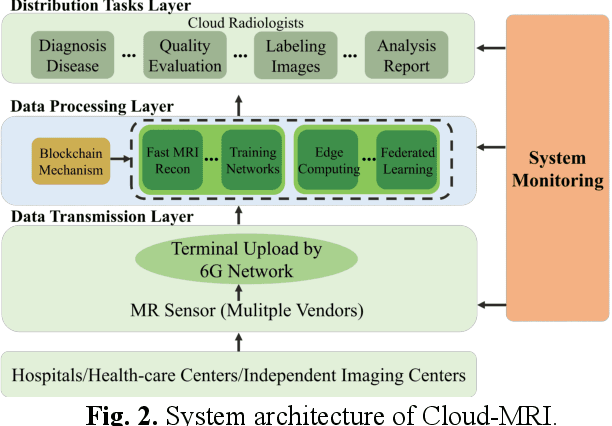
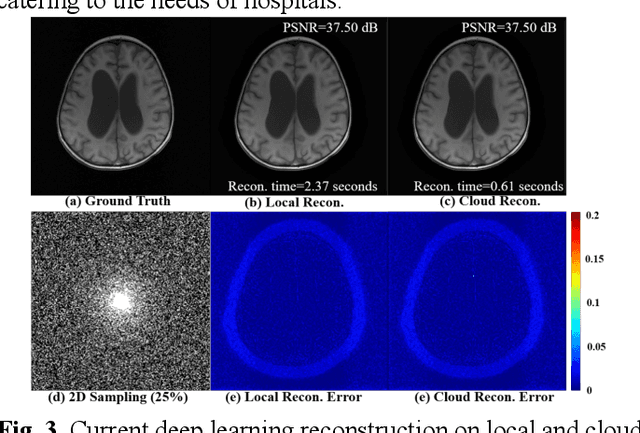
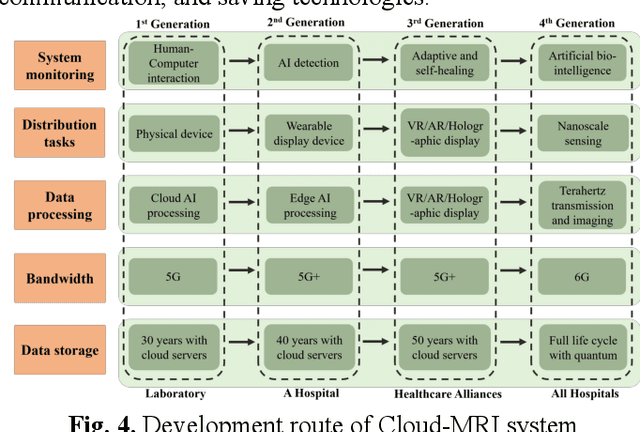
Abstract:Magnetic Resonance Imaging (MRI) plays an important role in medical diagnosis, generating petabytes of image data annually in large hospitals. This voluminous data stream requires a significant amount of network bandwidth and extensive storage infrastructure. Additionally, local data processing demands substantial manpower and hardware investments. Data isolation across different healthcare institutions hinders cross-institutional collaboration in clinics and research. In this work, we anticipate an innovative MRI system and its four generations that integrate emerging distributed cloud computing, 6G bandwidth, edge computing, federated learning, and blockchain technology. This system is called Cloud-MRI, aiming at solving the problems of MRI data storage security, transmission speed, AI algorithm maintenance, hardware upgrading, and collaborative work. The workflow commences with the transformation of k-space raw data into the standardized Imaging Society for Magnetic Resonance in Medicine Raw Data (ISMRMRD) format. Then, the data are uploaded to the cloud or edge nodes for fast image reconstruction, neural network training, and automatic analysis. Then, the outcomes are seamlessly transmitted to clinics or research institutes for diagnosis and other services. The Cloud-MRI system will save the raw imaging data, reduce the risk of data loss, facilitate inter-institutional medical collaboration, and finally improve diagnostic accuracy and work efficiency.
XCloud-pFISTA: A Medical Intelligence Cloud for Accelerated MRI
Apr 18, 2021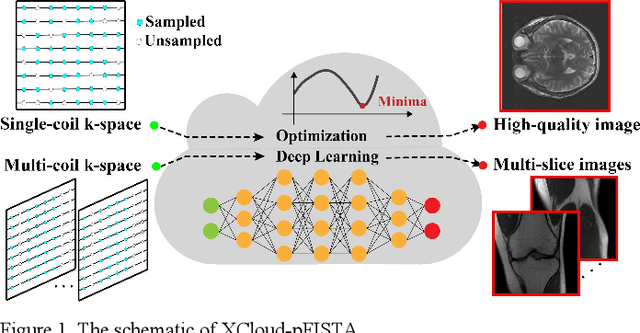
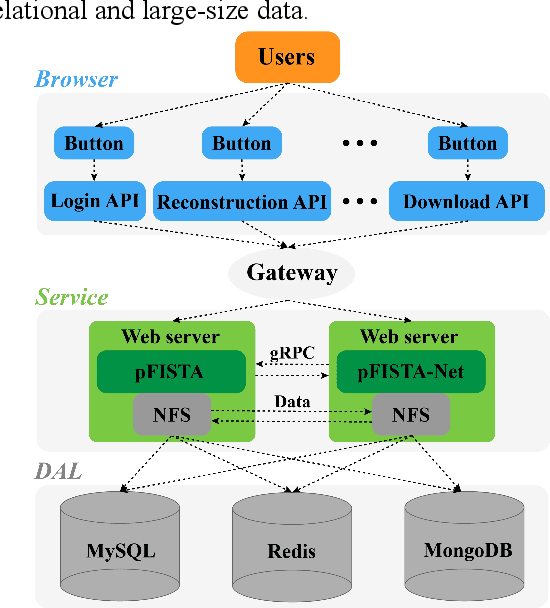
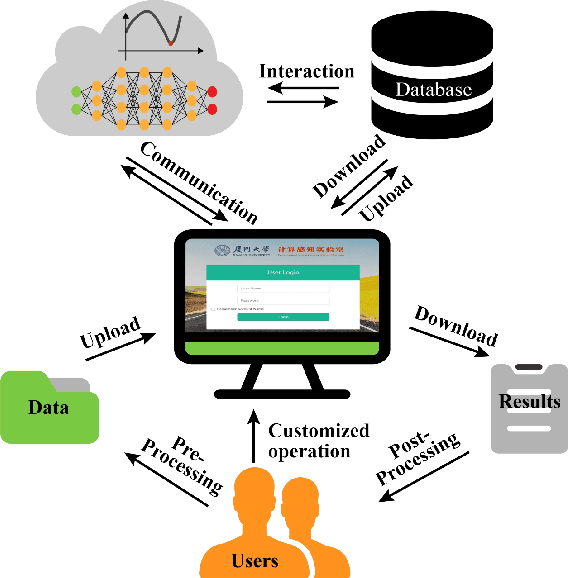
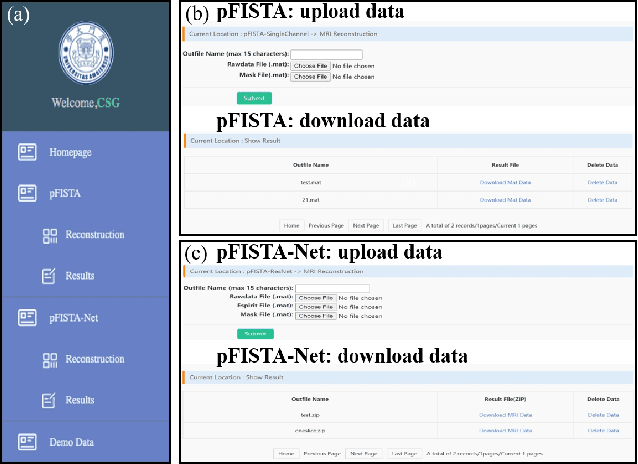
Abstract:Machine learning and artificial intelligence have shown remarkable performance in accelerated magnetic resonance imaging (MRI). Cloud computing technologies have great advantages in building an easily accessible platform to deploy advanced algorithms. In this work, we develop an open-access, easy-to-use and high-performance medical intelligence cloud computing platform (XCloud-pFISTA) to reconstruct MRI images from undersampled k-space data. Two state-of-the-art approaches of the Projected Fast Iterative Soft-Thresholding Algorithm (pFISTA) family have been successfully implemented on the cloud. This work can be considered as a good example of cloud-based medical image reconstruction and may benefit the future development of integrated reconstruction and online diagnosis system.
 Add to Chrome
Add to Chrome Add to Firefox
Add to Firefox Add to Edge
Add to Edge